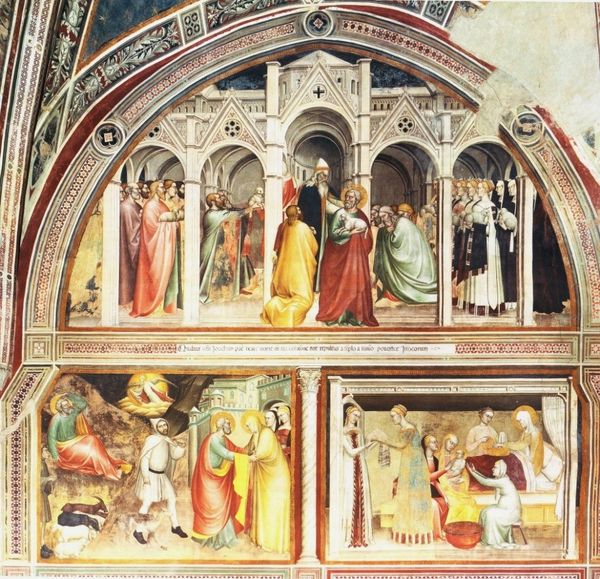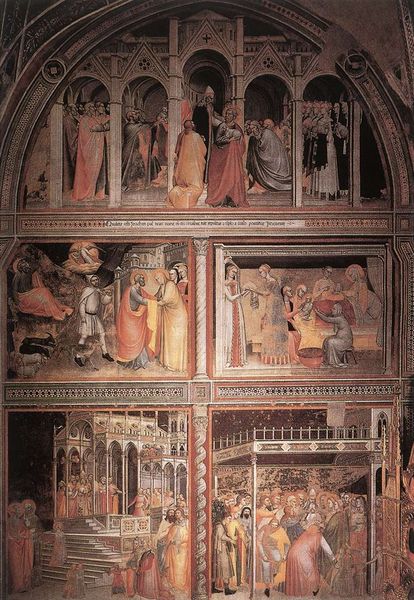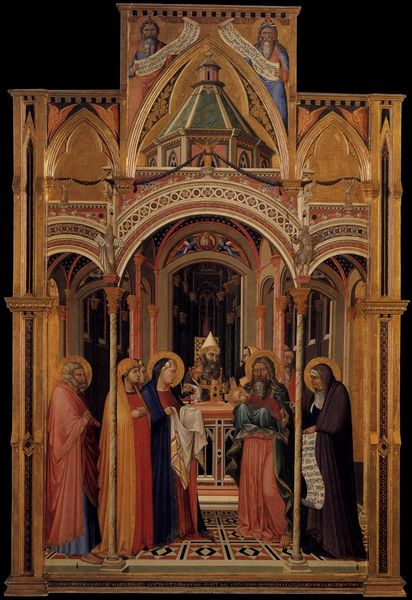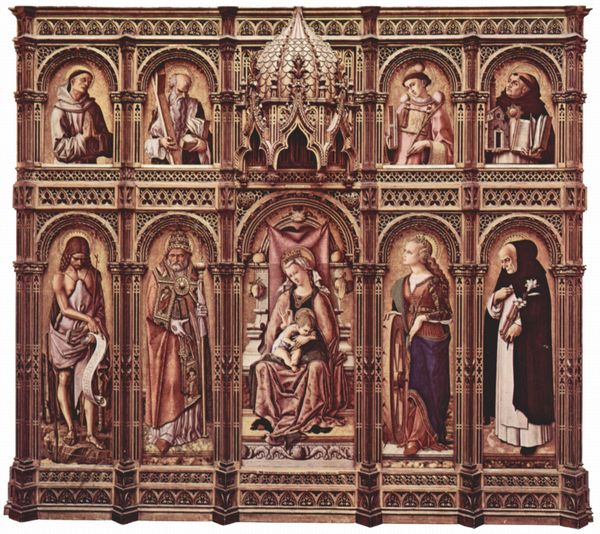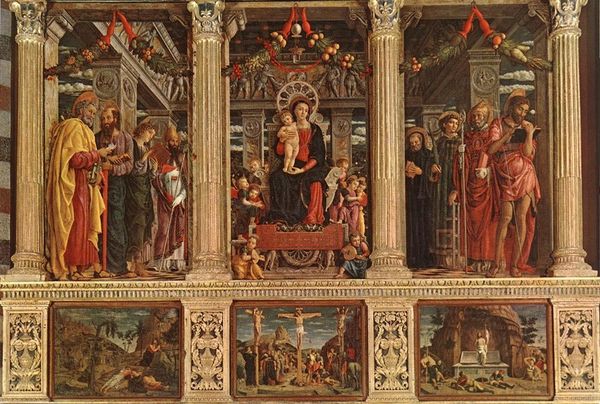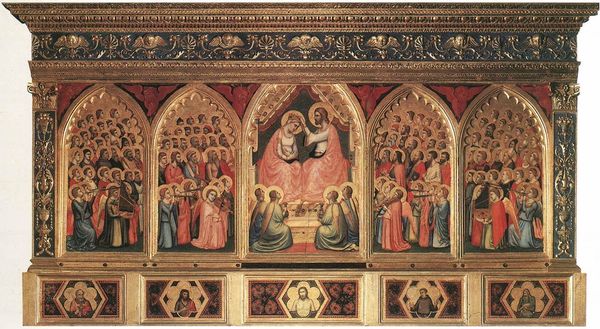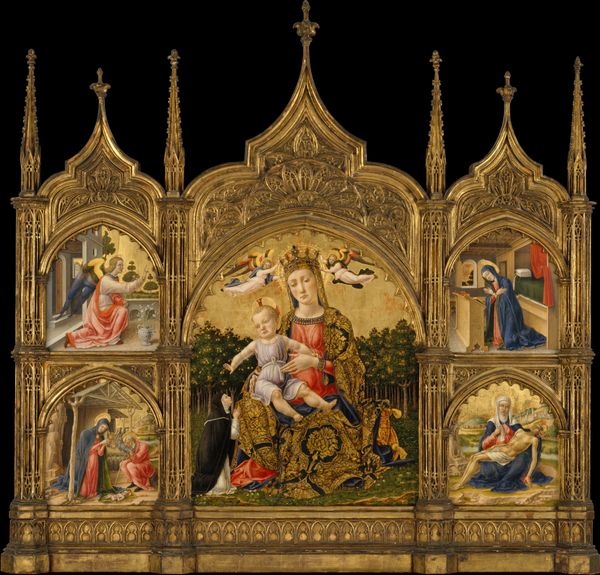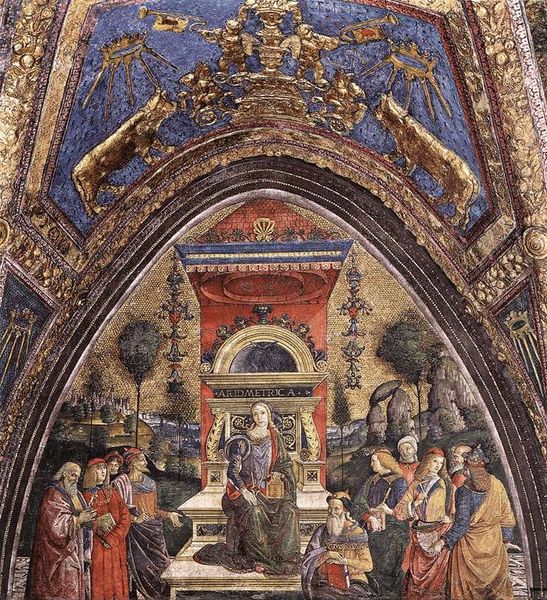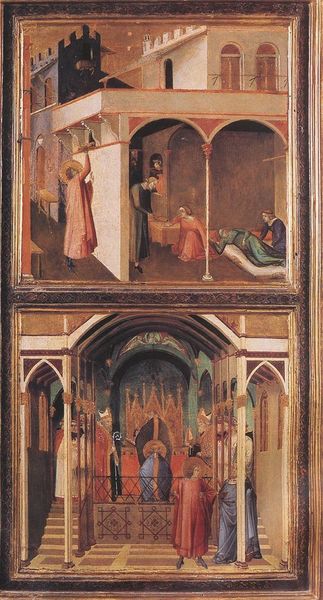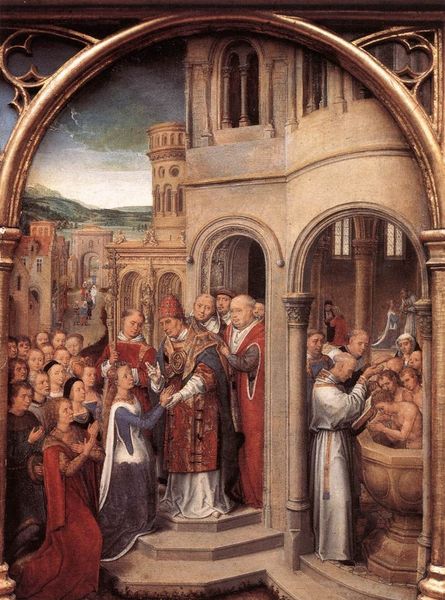
The Reliquary of St. Ursula 1489
0:00
0:00
hansmemling
Memling Museum (Old St. John's Hospital), Bruges, Belgium
tempera, painting, relief, sculpture, wood
#
medieval
#
narrative-art
#
tempera
#
painting
#
sculpture
#
relief
#
holy-places
#
historic architecture
#
traditional architecture
#
sculpture
#
wood
#
history-painting
#
northern-renaissance
#
miniature
Copyright: Public domain
Curator: Let's delve into the story held within this late 15th-century artwork: The Reliquary of St. Ursula, crafted around 1489 by Hans Memling. Editor: The artwork feels intensely spiritual, like gazing at a sacred space. The gilding catches the light, lending a heavenly quality, yet there's also a sense of miniature drama playing out. Curator: Memling created this piece, currently housed in Bruges, as a narrative reliquary, a container for relics. It is more than a beautiful object; it represents a key intersection of art, faith, and political identity within the medieval period. Editor: Reliquaries as storytellers... fascinating. It's hard to ignore how much symbolism seems woven into this golden structure. What does it tell us? Curator: Each panel intricately depicts moments from the legend of St. Ursula and her 11,000 virgin companions, charting their pilgrimage and, ultimately, their martyrdom. Consider the sociopolitical implications of this tale during a time of immense societal change; it is, perhaps, meant as a testament to female devotion but also underscores power dynamics. Editor: I see waves and ships; could they refer to wider ideas about travel, uncertainty or isolation? The Madonna and Child painted to the far right almost seems like a harbor, somewhere calm to return to. Curator: The iconography here isn't incidental. Ursula herself became a potent symbol for female agency within religious structures. Her story challenged male-dominated power, while ultimately succumbing to it, allowing Memling to showcase both a woman-centered tale while reinforcing the social order. Editor: I'm seeing how Memling balances celebrating St. Ursula within existing paradigms. What a delicate negotiation expressed through tempera and gilt wood! Curator: And to consider that each panel likely would've sparked its own discussions amongst viewers... it transforms this piece into a conversation starter through the ages, doesn't it? Editor: Absolutely, and what a powerful, enduring, conversation it still is, reminding us that even within sacred structures, dialogues around gender, faith, and agency always find their way in.
Comments
No comments
Be the first to comment and join the conversation on the ultimate creative platform.

